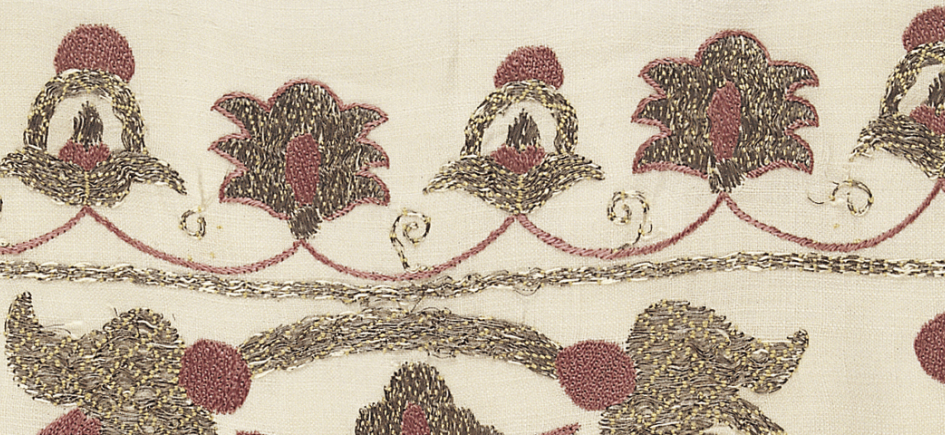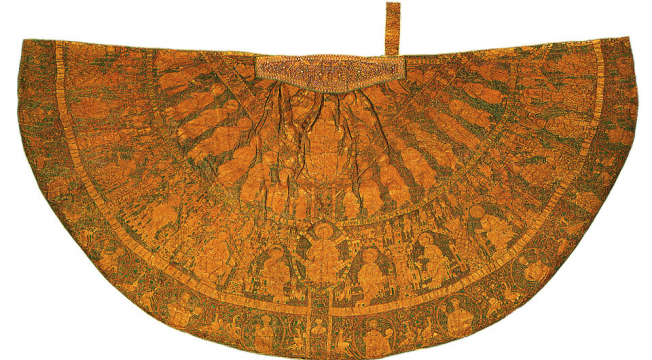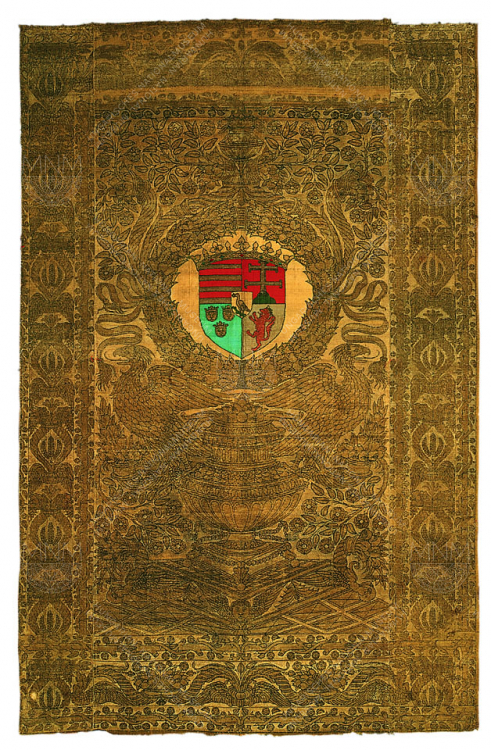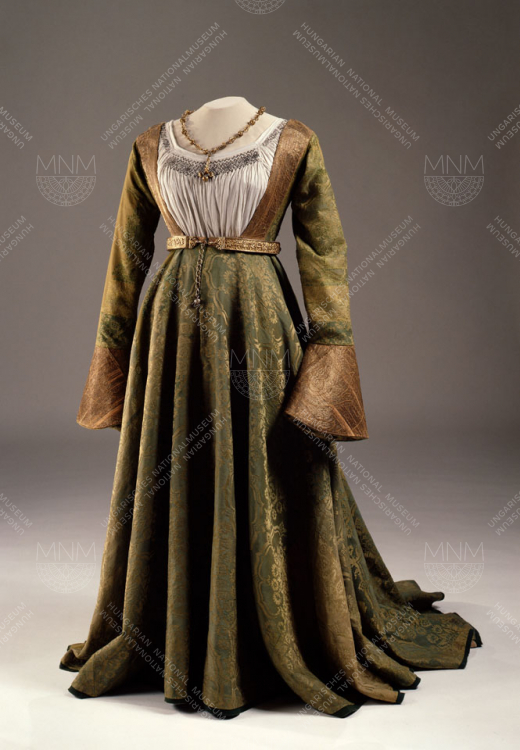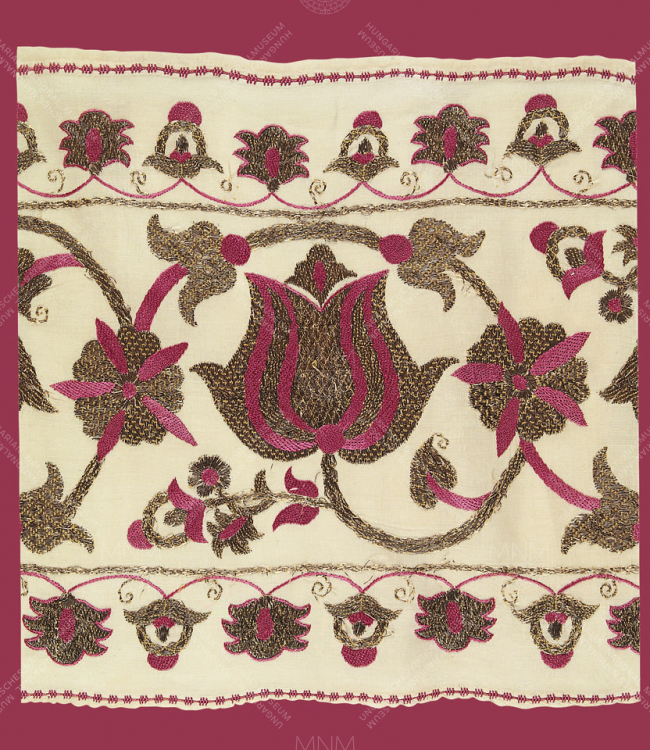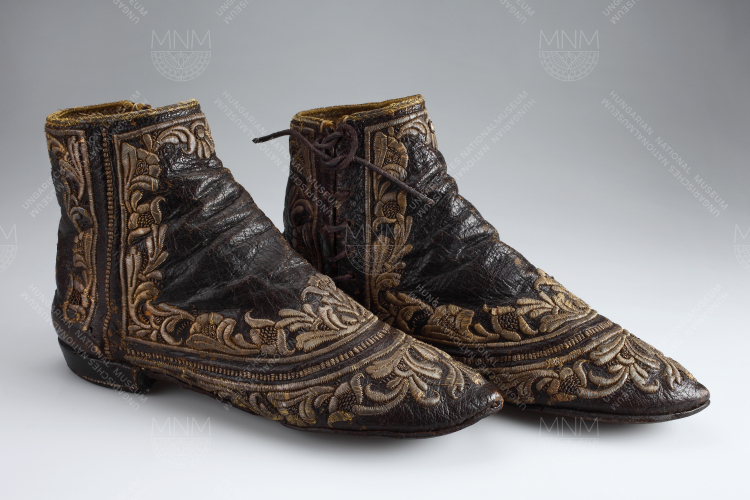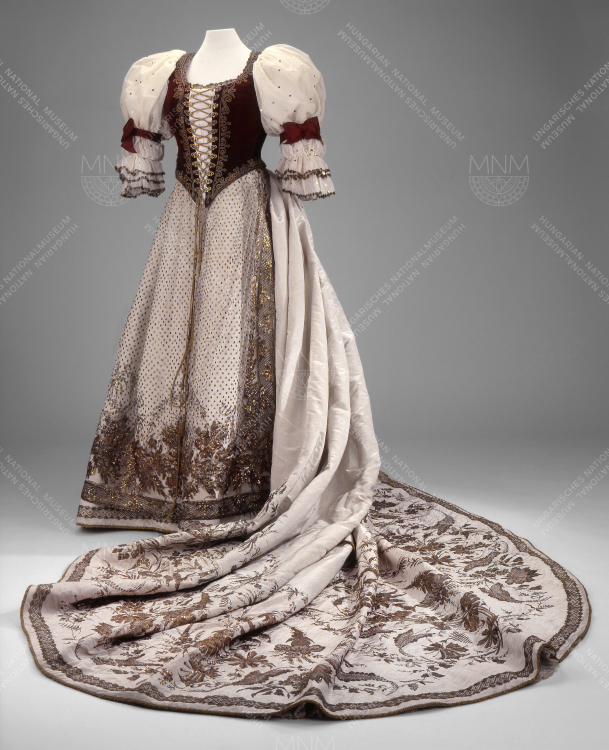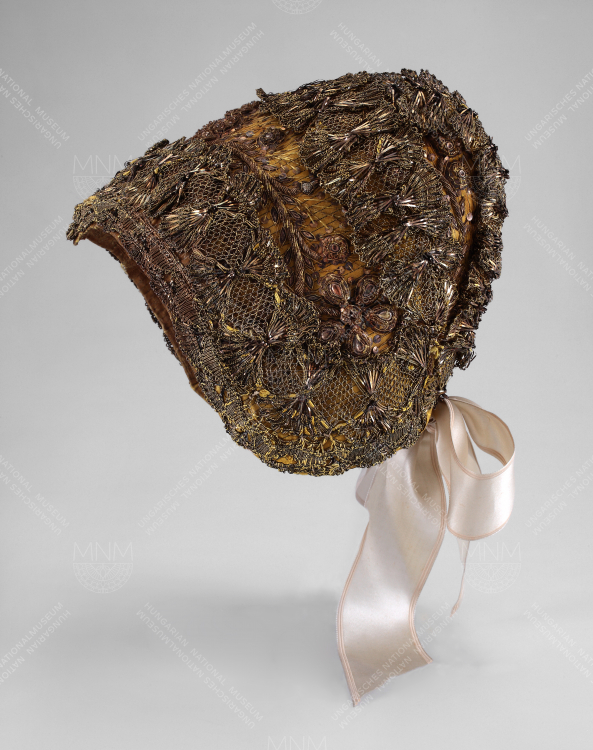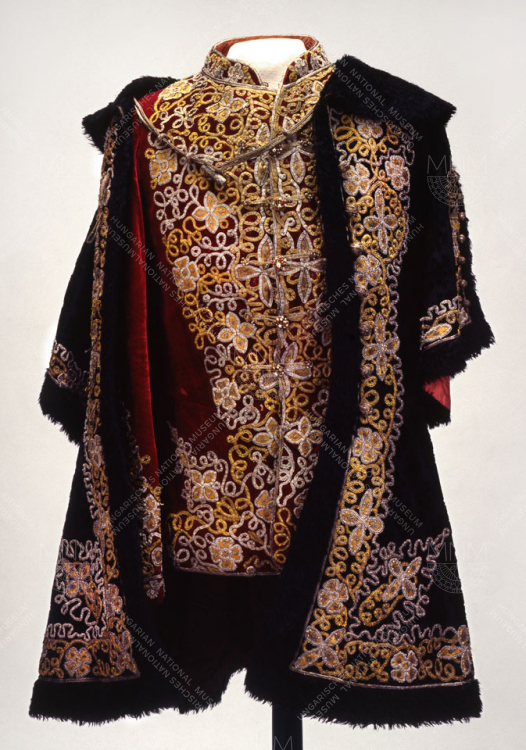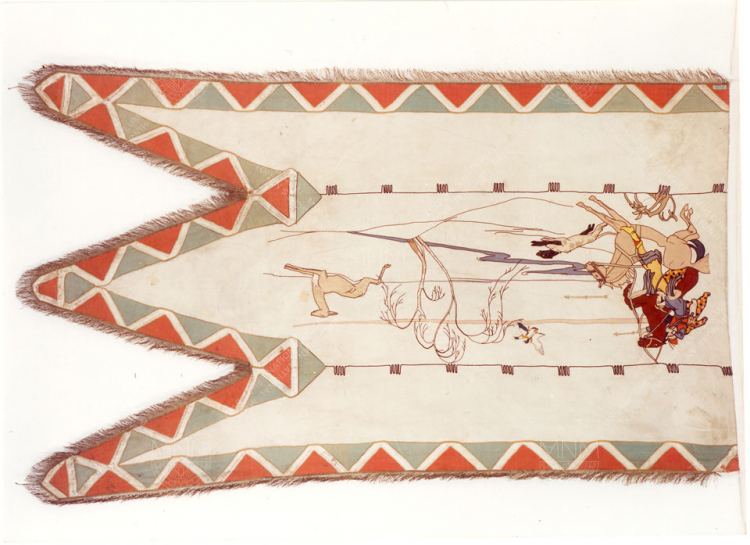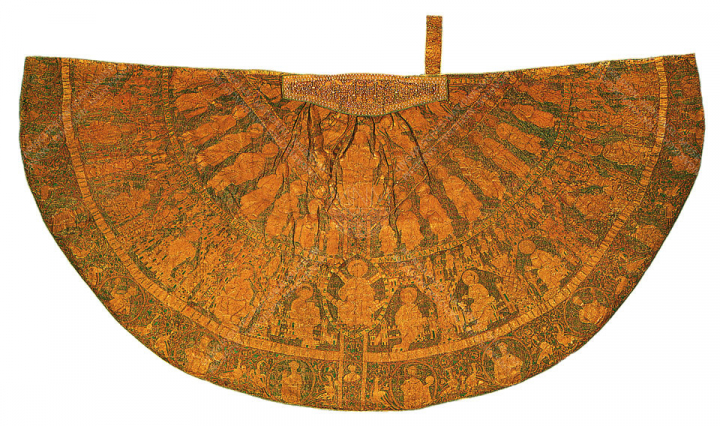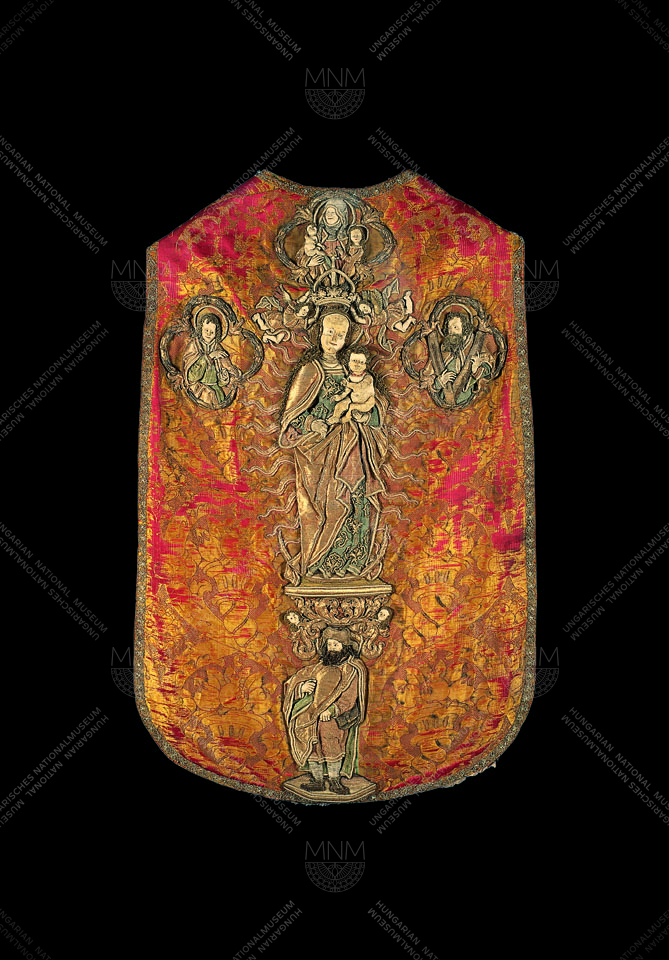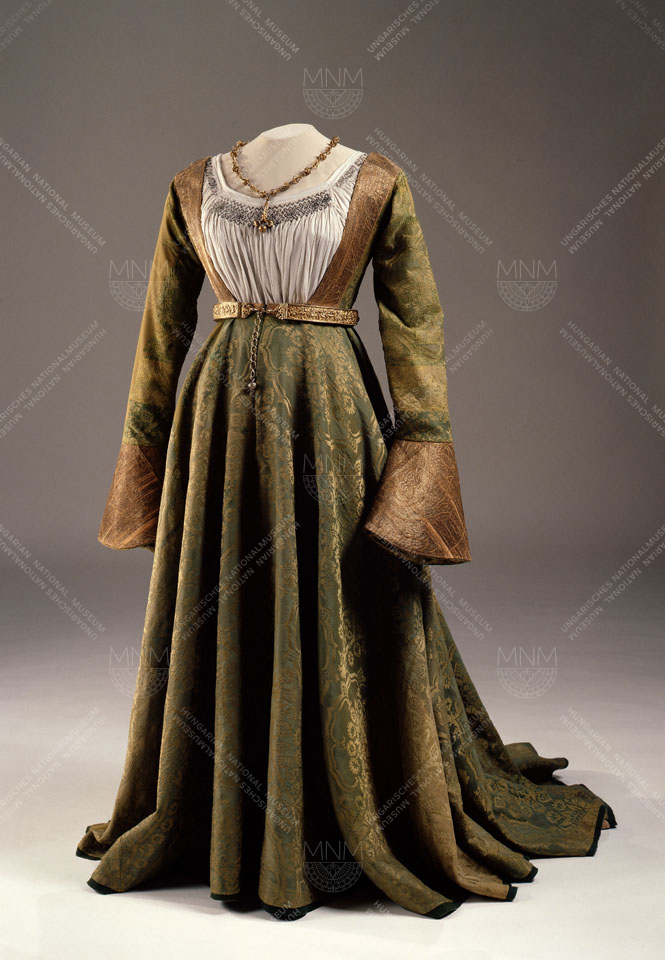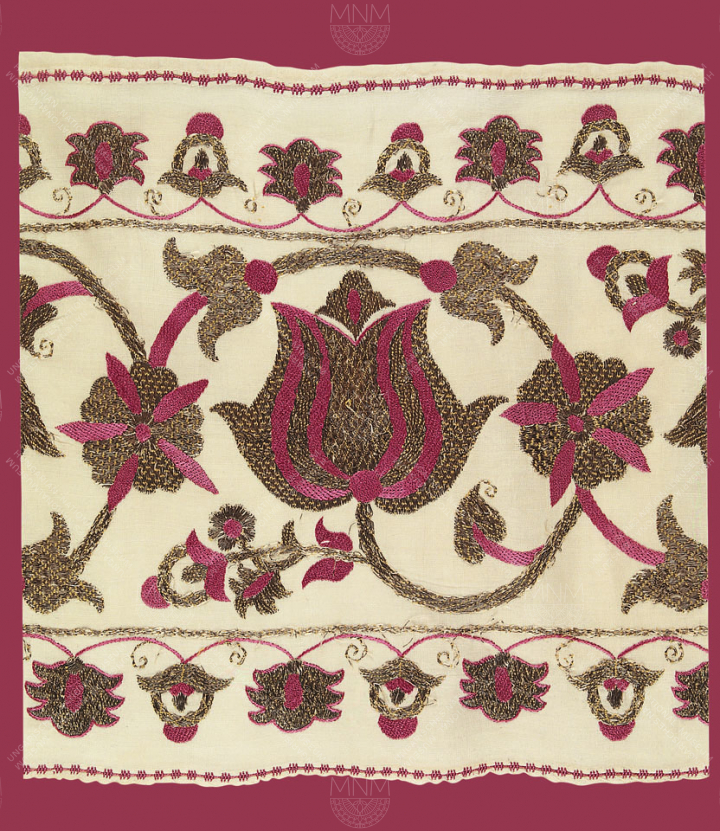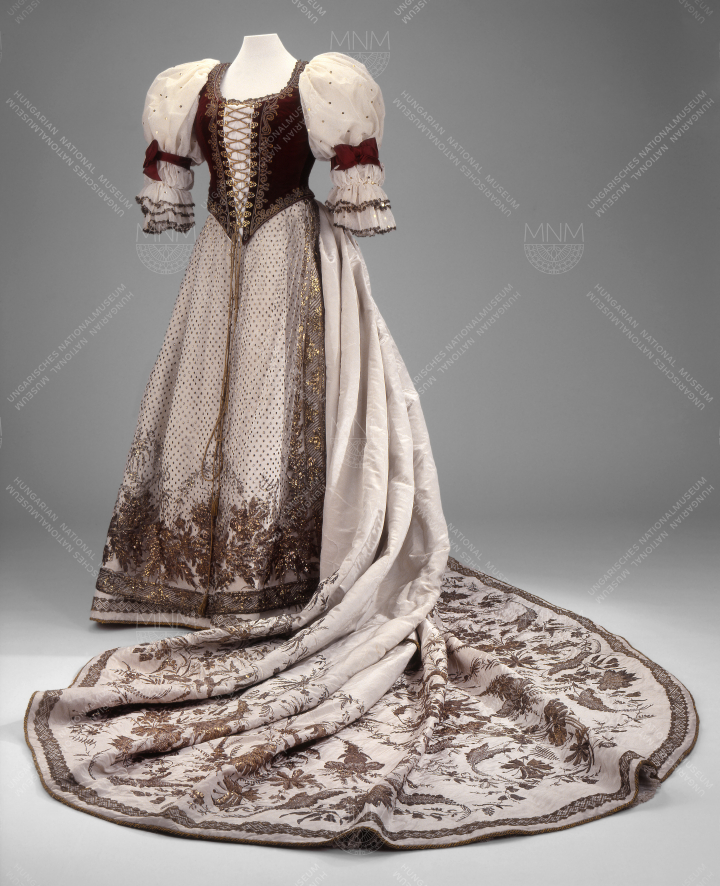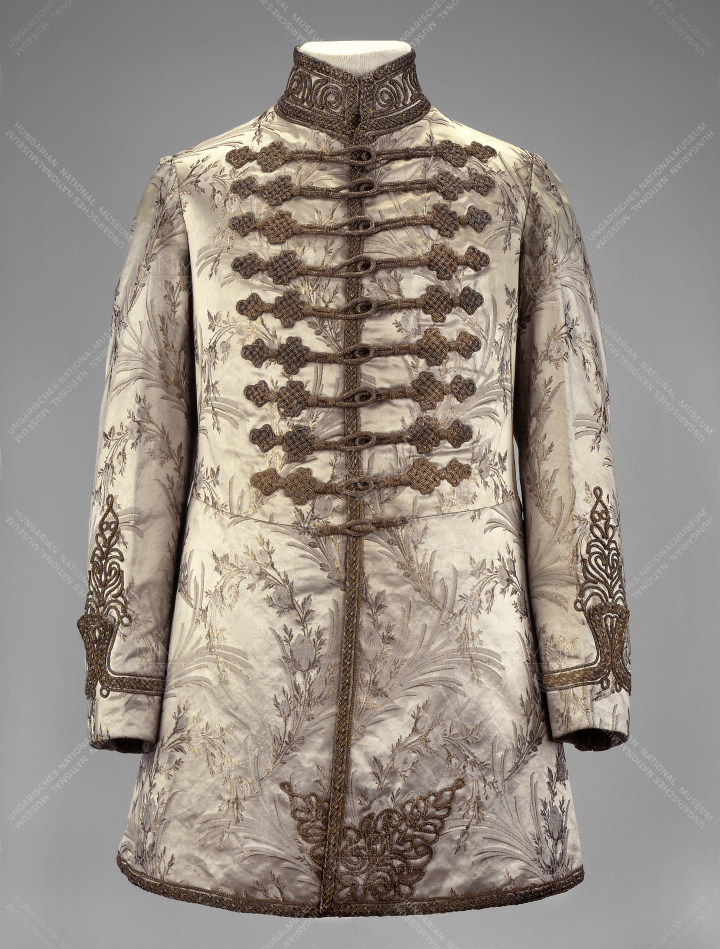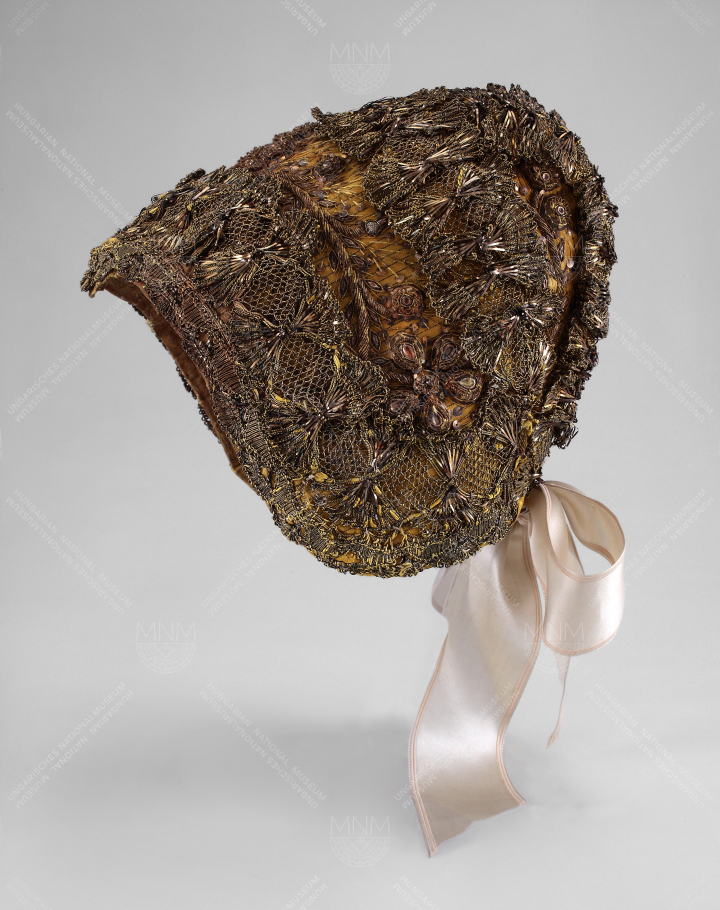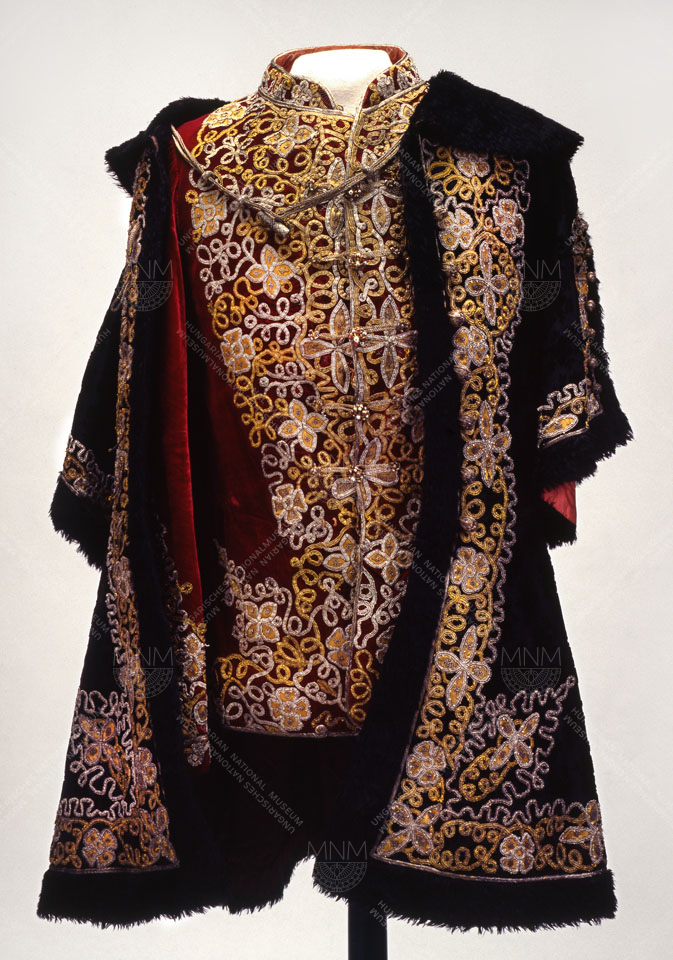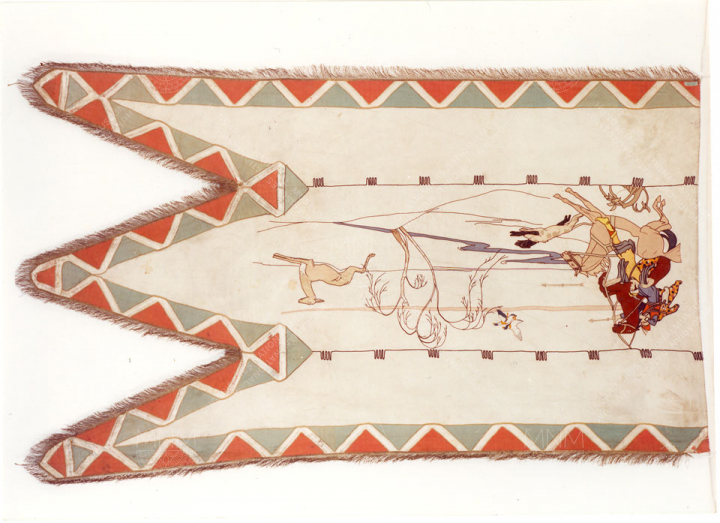
The double (archaeological and historical) profile of the Hungarian National Museum pretedermines the methodology of collecting textiles and clothing. Pieces of clothing worn by important historical personalities of the Hungarian past or object used by them are collected and preserved in our museum. Our outstanding pieces are the Coronation Mantle and the drapery of the throne of King Mathias.
The majority of the collection of 26 000 items is made up from pieces of clothing. There are ceremonial dresses worn during state or church holidays, but also wedding, baptismal and funeral costumes also worn during important events of one’s life coming from the 16th to the 20th century, The collection houses dressesof the aristocracy and wealthy citizensand accessories complementing these garments: footwear, handbags and umbrellas, mostly from the 18th century. In addition to the secular garments, ecclesiastic clothing of the highest quality also belong to the collection, coming from the 15th century until the end of the 19th century.
Tablecloths, bed linens as well as tablecloths used during the Holy Communion ebroidered with gold and silk threads from the 17-18th centuries form a rich and special group in the collection. Home furnishings from the 19-20th centuriesincluding curtains, bedding, and tablecloths also form part of the collection. Painted flags and horsing from the 17-19th centuriesmake a special subgroup within the collection.
Nearly 10,000 artefacts of the latest textile collection –clothing, housing, "political" textiles, and flags – reflect the diverse material world of the modern society. Handicraft and industrial goods, unique pieces and serial products are all part of the collection. Personal objects of major historical personalities are particularly precious, according to the traditions of the National Museum. In the last decade the personal items of Miklós Horthy, János Kádár and József Antall were added to the collection. Flags, scarfs, wristbands and uniforms representing the various societies, associations and movements of the 20th century are important sources of social history research and are essential tools of historical exhibitions. The section of anonymous objects of everyday life is the fastest growing and most remarkable part of the collection.
The most beautiful and valuable pieces of the Thextile Collection can be seen in the permanent historical exhibition. One of them is the national scouts’ banner designed bySándor Nagy; the formal dress of the Order of the Holy Grave; the Hungarian-style formal dress designed by Klára Tüdős;female and male prison clothes from Auschwitz Imre Nagy's jacket worn by him while he was being imprisoned.








